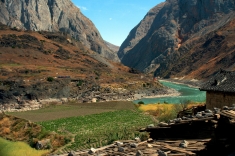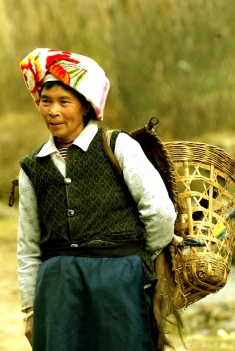China’s Government Proposes New Dam Building Spree
Update: China's State Council announces blueprint for dam construction that includes controversial projects like the Nu/Salween cascade and the Xiaonanhai Dam.
Under its 12th Five-Year Plan, the Chinese government proposes to build 120 gigawatts of new hydropower plants on the Nu/Salween, Lancang/Upper Mekong, Jinsha/Upper Yangtze, and the Yarlung Tsangpo (which becomes the Brahmaputra). This equals more than one new Three Gorges Dam every year for the next five years, and is more than any other country has built in its entire history.
China already counts about half the world's large dams within its borders. It has paid a huge price for this development. Chinese dams have displaced an estimated 23 million people, and dam breaks have killed approximately 300,000 people. Scientific evidence suggests that the Zipingpu Dam may have triggered the devastating earthquake in Sichuan of 2008. Dams have also taken a huge toll on China's biodiversity, causing fisheries to plummet, threatening the endangered giant Chinese sturgeon, and driving species such as the baiji, or Yangtze River Dolphin, to extinction.
As a harbinger of the new trend, the Chinese government announced in February 2011 that it would allow a dam cascade on the Nu River (or Salween) – a pristine river which lies at the heart of a World Heritage Site – to be built. These plans were re-enforced in a State Council notice issued on 23 January 2013. China's premier had stopped these projects in 2004 as a major victory for environmental groups. The government has also agreed to shrink the most important fisheries reserve on the Yangtze River so that a new hydropower scheme, the Xiaonanhai Dam, can go forward. This project may sound the death knell for the endangered giant Chinese sturgeon.Achieving the new plan's target would require building cascades of dams on several rivers in China's Southwest and on the Tibetan Plateau – regions that are inhabited by ethnic minorities, ecologically fragile, rich in biodiversity, and seismically active. If the new plan goes forward, it will irreversibly destroy China's great rivers and biodiversity hotspots of global importance.
International Rivers will create international awareness about the impacts of China's new dam building spree, and will remind the Chinese government of its commitments to the protection of biodiversity. We will also raise concerns about the proposed dams on the Nu River with the UN body that protects World Heritage Sites. Please support our effort by making a donation to International Rivers' China program and by spreading the word!





